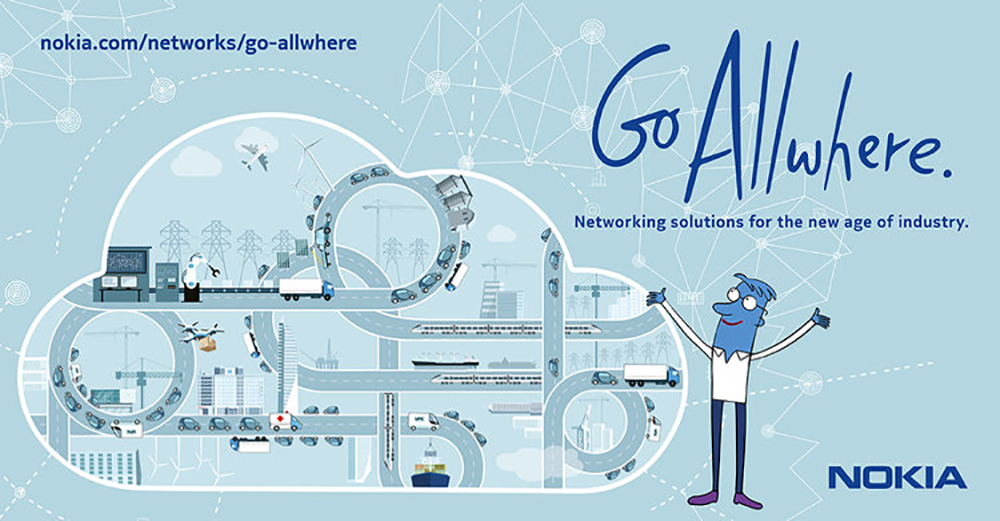Nokia has introduced its ‘Future X for industries’ strategy and architecture, developed by Bell Labs, to drive dramatic productivity improvements across a wide range of industry sectors.
As technologies such as industrial Internet of Things (IIoT); edge cloud supporting augmented intelligence and advanced security analytics; and end-to-end 5G capable networks become a reality, they will radically speed up the Digital Transformation of industries such as manufacturing, logistics, transportation and energy, as well as governments and cities.
Nokia’s holistic approach promises to help drive a new era of productivity and human-machine interaction that will unlock trillions of dollars of economic value in the next decade.
To date, the digitalisation and automation of enterprises has yielded productivity benefits, predominantly by shifting business support functions from physical to digital operations.
While these gains have been notable, only about 30% of enterprises – largely in IT-centric industries – have been able to realise the ‘digital opportunity’. Importantly, traditional asset-intensive industries – which comprise more than two-thirds of GDP in the U.S. – have yet to experience the full benefits of this Digital Transformation, known as Industry 4.0.
Physical industries depend on a variety of emerging business- and mission-critical applications that, when digitised and automated, offer the potential to make power grids smarter, factories more productive, the Internet of Medical Things (IoMT) responsive and reliable, cities safer and more liveable and much, much more. In short, there is the potential to transform human existence and radically enhance industries and infrastructure in what will be the Forth Industrial Revolution.
Future X for industries
Emerging Industry 4.0 applications will require seamlessly interconnected systems that can sense, analyse, optimise, and control key attributes and actions across a broad range of assets including machinery, tools and devices.
Nokia’s Future X for industries architecture provides a framework for open, connected systems for each major industry that can accelerate the digitisation and automation of these physical assets, with pinpoint precision and augmented intelligence, no matter where they are located.
To accomplish this, networks must be able to connect everything simultaneously, with guaranteed quality of service, even as the number, diversity and distribution of assets grows.
For companies to analyse information about the state of those assets and optimise their operations, networks must have the flexibility to connect industry applications to compute resources in a way that meets stringent latency, capacity, reliability and security requirements.
They must be able to dynamically adapt to transport massively varying amounts of data between a multitude of devices, sensors, machines and platforms to garner and apply deeper insights that ultimately support precise execution, maximise productivity and improve safety.
Marcus Weldon, President, Nokia Bell Labs, said: “Industry is driven by a constant quest for leading profitability, which in a dynamic marketplace requires maximum productivity. It is now possible for those in both the digital and physical economies to accelerate their digital transformations and realise unprecedented productivity gains. The Future X for industries architecture is designed to describe the essential foundation of this Industry 4.0 revolution, much as the Future X network vision we published in 2015 is serving as a blueprint for service provider network evolution.”


